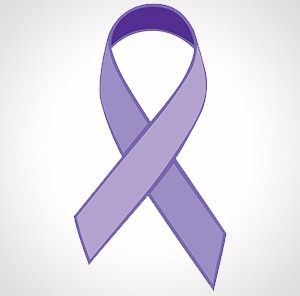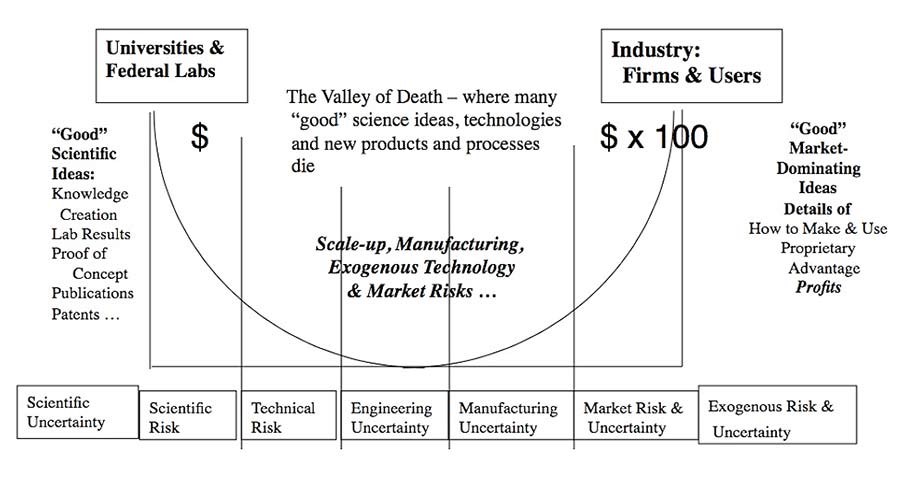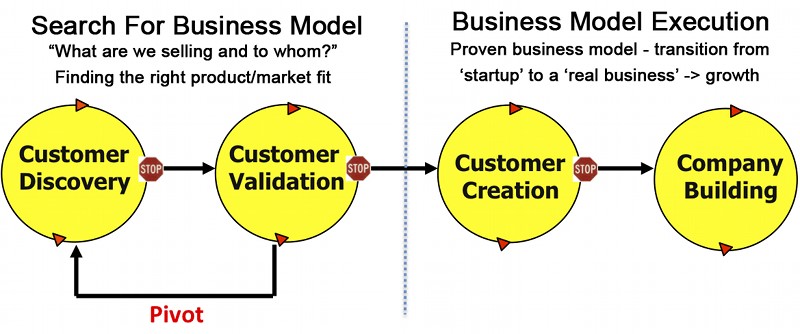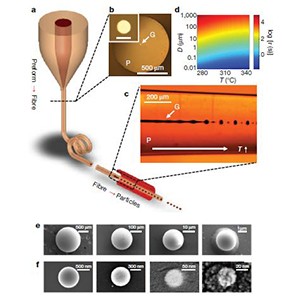Detecting Dementia Early With a Simple Assessment Tool
June 2, 2016
 Dementia is a neurodegenerative syndrome and it is on the rise world-wide. Detecting it early can mean a better quality of life for those affected and more time planning for the future.
Dementia is a neurodegenerative syndrome and it is on the rise world-wide. Detecting it early can mean a better quality of life for those affected and more time planning for the future.
According to the World Health Organization (WHO), dementia is caused by a variety of brain diseases, such as Alzheimer’s, and is associated with memory loss, impaired thinking, changes in behavior, and interference with daily activities. A new case of dementia is diagnosed every four seconds (that is 7.7 million new cases annually!). In 2015, the estimated number of people who live with dementia is 47.5 million and that number is expected to jump by 60 percent to 75.6 million by 2030.
Since early diagnosis can mean better quality of life, more accurate treatment of symptoms and more time to organize personal affairs, a UCF researcher partnered with a physician to develop a new assessment tool that can help diagnose dementia early through a series of 26 questions designed to assess a patient’s mental state. These questions can be asked at home by a caregiver or in a clinical setting. Currently available screening methods are usually performed by healthcare providers and are expensive. They are properly stored as medical records, however, in busy clinical settings such as emergency rooms, a patient’s medical history may not be readily accessible which could lead to a misdiagnosis.
UCF researcher, Varadraj “Raj” Gurupur, Ph.D., and Dr. Richard R. Selvaggi, a physician from Live Oak Medical Center in Commerce, TX have developed this simple-to-use, cost efficient tool. The Dementia and Delirium Analysis Research Tool improves the accuracy of dementia and delirium diagnoses and patient outcomes, reduces health care provider time and the need for expensive testing, and can be used repeatedly to document syndrome progression.
The tool is a questionnaire comprised of 26 questions. The first section asks questions about the demographics of the caretaker or caregiver and the patient (e.g., age, gender, and race). The second section assesses the patient for delirium symptoms (e.g., questions about mood, lethargy, and sleepiness). This section also screens for symptoms of mild dementia through math problems and common knowledge questions such as “Who is the current President of the United States?” and “On which date do we celebrate Christmas?”
—
To improve the quality of life of dementia patients, their caregivers, and their families, the Delirium and Dementia Analysis Research Tool can be a valuable resource for both healthcare providers and caretakers. To learn more and for a copy of the questionnaire, contact John Miner.
Startups, Start Here: What Happens to the Research? I-Corps Teaches Teams How to Take Research to Market
May 25, 2016
Existing knowledge from patents can be used to create billion dollar businesses. Universities, like the University of Central Florida, have millions of dollars’ worth of innovative research that have yet-to-be-discovered market applications. In a Reuters article, IP analyst Bob Stembridge points out that, “Invention brings something new into being, while innovation brings something new into use. Innovation is the development of better solutions and products to address unmet market needs whilst maximizing returns for the organization.”
Taking inventions to innovation has the potential to revolutionize industries, improve standards of living and create jobs in local economies. So how can individuals explore the worth of patented research to bring innovations to market?
Let’s look at a group of student researchers at UCF who decided to patent their innovative discovery – a hydrophobic and self-cleaning nanostructure material. The team, Feynman Nano, believed that sheets of these nanostructures could be applied to solar panels to both reduce the cleaning time and increase panel efficiency. To determine if they had a viable business, the researchers participated in a program that teaches individuals how to validate their proposed market, UCF I-Corps.

UCF I-Corps is funded by the National Science Foundation (NSF) to teach the process of starting a business through the Business Model Canvas (BMC). The BMC gets rid of the traditional business plan and focuses on conducting a series of hypothesis tests to validate assumptions before building a prototype or starting a business. In turn, this reduces the risk of falling into the “valley of death,” where 90% of startups fail. A survey of failed startups conducted by Forbes determined that “42% of them identified the ‘lack of a market need for their product’ as the single biggest reason for their failure.” Learning the BMC methodology has empowered Feynman Nano to survive the valley of death through understanding what they were building and for whom, before they built it.
During the 5 week I-Corps program at UCF, the team conducted over forty face-to-face interviews to gather data and validate their assumptions on their customer segment (the group that would eventually purchase their product) and value proposition (reason for purchasing the product). After receiving feedback from potential industry customers and the I-Corps teaching team & mentors they learned that although their customers wanted the technology, they did not want to pay for them to scale. Feynman Nano then researched residential solar uses for a self-cleaning application, but found the market wasn’t sophisticated enough to know it need their product.

To better understand where the technology could be scaled, they explored different options by “pivoting” their focus to various possible applications. Since UCF I-Corps provides seed money from the NSF, they were able to attend industry-specific conferences to meet potential customers and continue their search. After several rounds of pivoting, the team settled on an anti-microbial application for preventing healthcare associated infections.
As a result of going through the UCF I-Corps program, Feynman Nano now has NSF lineage (which means they can apply for exclusive NSF grants) and a 60% increased chance of obtaining SBIR/STTR funding. Since their graduation, they have applied to the National I-Corps program, where, if accepted, they will receive $50,000 in seed funding. Feynman Nano was also accepted in to one of the most prestigious accelerators in the world with a 2% acceptance rate, Y-Combinator.
“Innovation drives the economy, but much of the new technical knowledge required for such innovation is contained only in patents. The U.S. patent database is the world’s largest encyclopedia of technology improvements and technology experts in the world.” – Jay Walker, Wired
Countless stories like this can be found and are waiting to be discovered. Between 2012 and 2014, UCF spent more than $433 million dollars in research expenditures and has hundreds of patents waiting to be tested in the market. UCF I-Corps has been proven to increase a startup’s probability of success and reduce the probability of failure. So if you either own a patented technology or are looking to license a patent to create a company, why not increase your chances of success by going through UCF I-Corps?
For more information, contact the I-Corps program.
Written by Vanessa Zabala
A New Way of Making the Nanoparticles Found in Common Household Products
May 5, 2016

Fluid capillary instabilities in multimaterial fibres as a route to
size-tunable particle fabrication.
Ayman Abouraddy, Ph.D., associate professor in The College of Optics and Photonics (CREOL) at UCF has helped create a new way to form micro- and nanoparticles. This new way of doing things can potentially be a game changer for a variety of industries where these tiny particles are used including healthcare, health and beauty products, and industrial and residential coatings.
Because this new technique does not require a chemical reaction, the particles are safer to use in products that come in to direct contact with our bodies, including skin care and drug delivery.
Here are four of the many ways that this chemical-free process of creating tiny particles can improve products we frequently use:
- Cancer drug delivery requires nanoparticles be able to pass through the bloodstream and then be deposited only in the targeted location within the body, reducing the risk of damaging healthy tissue. With this new fabrication technique, these sophisticated drug delivery systems can use better nanoparticle-based materials, potentially further reducing tissue toxicity.
- Paint is partially comprised of light-scattering nanoparticles. When paint dries, these nanoparticles become visible. Using Abouraddy’s technique, these tiny particles can be used to create more efficient, thinner coatings. Furthermore, coatings can now have new functions (i.e. reflective, absorptive, etc.) by adjusting the paint’s optical properties.
- In sunscreen, particles absorb or reflect UV. The commonly used active chemical ingredients, such as oxybenzone and octinoxate, can be toxic – reportedly causing hormonal disruptions. With the use of this new fabrication method, sunscreens can economically choose non-toxic materials that have tunable optical properties over known toxins.
- Most cosmetics are based on micro- and nanoparticles. Recently, the Obama administration banned plastic microbeads found in cleansers because of their harmful environmental impact—specifically, because they are made of plastic, they do not dissolve. A study published in an Environment Science & Technology report stated that every day more than 8 trillion of these insoluble beads entered America’s waterways. With this new technique, microbeads can be made of more environmentally-friendly materials.
—
The science behind this method is a process called dripping-to-jetting transition. Think of running water from a faucet: when the faucet is opened, high pressure forces water out as a jet. As the faucet is closed, pressure decreases and water droplets form as inertia (the momentum of the water) and viscosity (stickiness) work against each other. With this new approach, a fiber of a selected material is heated, viscosity drops, and spheres (particles) are created.
This is a material-agnostic approach, meaning it can work on almost any material, where other processes are material-specific. It also creates separate particles that do not cluster together or clump into one mass, which is important when using them in any of the applications listed above.
Abouraddy’s particle fabrication method has the potential to disrupt a myriad of industries. To learn about licensing opportunities, contact John Miner.